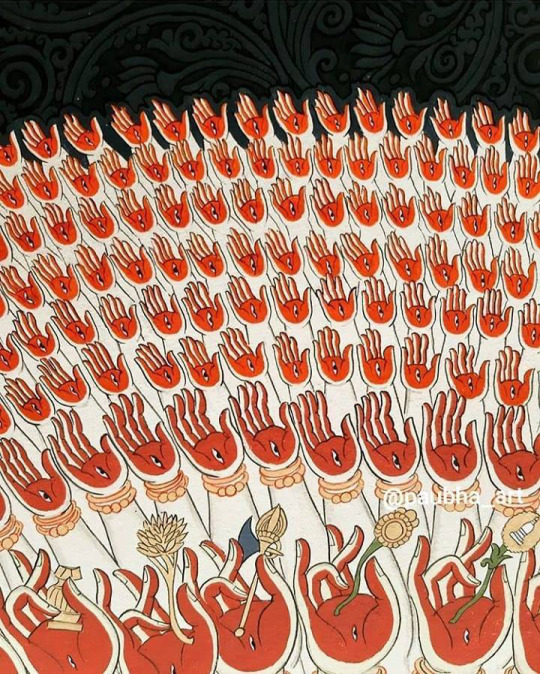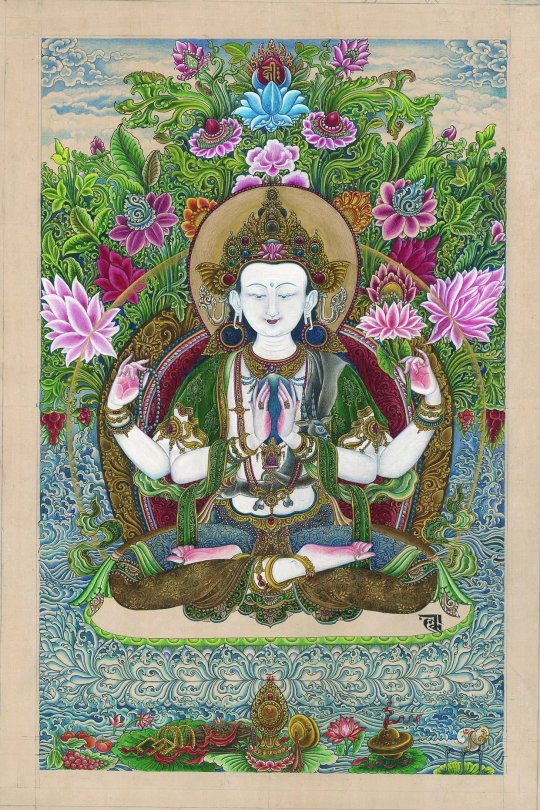#paubha
Photo

Arya Tara by Mahendra Dangol, Nepal
499 notes
·
View notes
Text
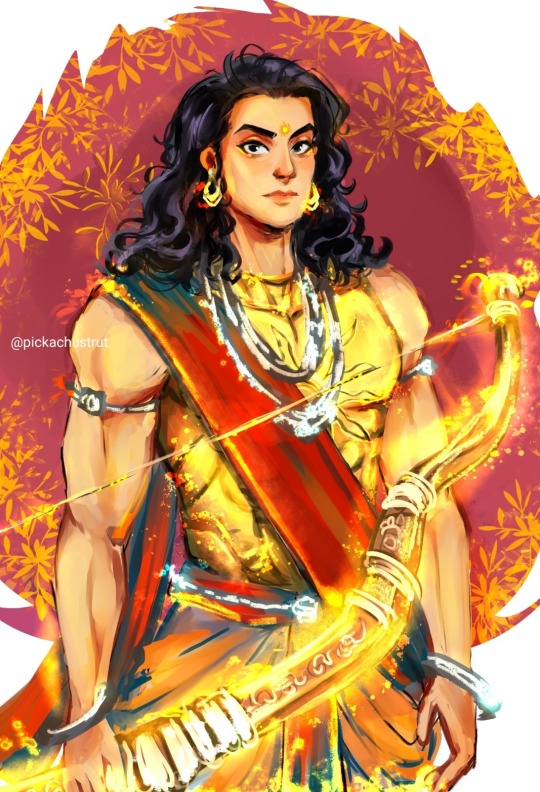
#Krishna#mahabharata#ramayana#hindu art#paubha#vedic astrology#hindu astrology#hindu calendar#hindu mythology#hindudharma#hindu panchang#sanatani#sanatan#Spotify
10 notes
·
View notes
Text
My Thangka teacher show me How to draw Patra (pattern).
4 notes
·
View notes
Photo

I need nothing. I seek nothing. I desire nothing. My religion is to live - and die - without regret. If you realize the Emptiness of All Things, Compassion will raise within your heart; If you lose all differentiation between yourselves and others, you will be fit to serve others. And when in serving others you shall win success, then shall you meet with me; And finding me, you shall attain to Buddhahood. Songs of Milarepa #thangka #thangkapainting #thangkaart #thangkapaintings #milarepa #paubha #bodhi #spiritualgrowth #dhamma #karuna #prajna #buddha #buddhism #buddhist #vajrayana (at Boudha) https://www.instagram.com/p/Ci1Q51Rom8Y/?igshid=NGJjMDIxMWI=
#thangka#thangkapainting#thangkaart#thangkapaintings#milarepa#paubha#bodhi#spiritualgrowth#dhamma#karuna#prajna#buddha#buddhism#buddhist#vajrayana
1 note
·
View note
Photo

Artist: A paubha of White Tara, the Mother of all Buddhas, by Prem Man Chitrakar “Tara or Jetsun Dölma in Tibetan is known as the mother of liberation, an important figure in Buddhism. She appears as a boddhisatva or as a Buddha in various traditions of Buddhism. Tara is also mostly associated with success and achievements. She is also a meditation deity and is known for her 21 manifestations, each of which has a different color, and one of which is the Black Tara.Black Tara administers tests for the soul, determining our evolvement and our spiritual enlightenment. She rules over spirits, exorcisms, and healing of both the body and the mind.” Praises to the Twenty-One Taras https://fpmt.org/wp.../uploads/prayers/21tarasltrrdr.pdf https://www.instagram.com/p/CfOqXIStbfF/?igshid=NGJjMDIxMWI=
4 notes
·
View notes
Photo
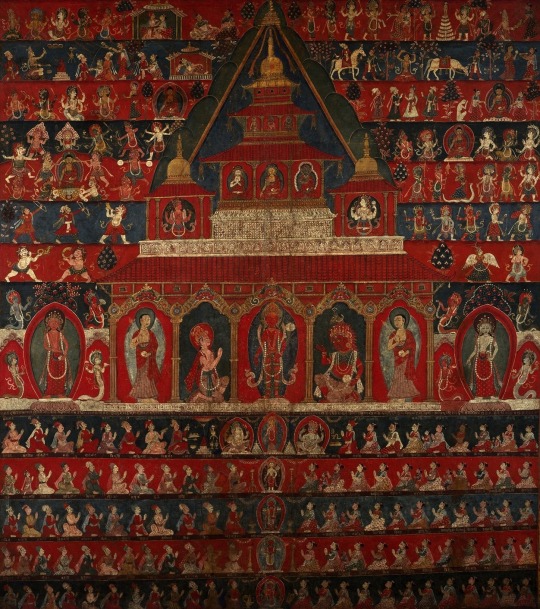
Rato Macchendranath Temple. Nepal. 1850.
This monumental work, one of the largest Nepalese scroll paintings (paubha) in the world, depicts the temple of Rato Macchendranath in the ancient kingdom of Patan in the Kathmandu Valley. In the center of the composition sits the Red Lord, known as either Rato Macchendranath or Red Padmapani Avalokiteshvara. In the registers above are scenes from the life story of Buddha Shakyamuni, accompanied by images of Hindu gods receiving his teachings. The many patrons and devotees are arranged in rows across the bottom registers, each in a pose of worship and wearing clothes of the time period. They are each identified by inscription
#rato macchendranath temple#pigment on cloth#paubha#nepal#patan#kathmandu valley#tibetan buddhism#hinduism#temple#rubin art museum#in the kingdom of the gods#kathmandu#magictransistor#alejandromerola#1850
233 notes
·
View notes
Photo

Kali, nepali paubha
346 notes
·
View notes
Text
TRIMBAKESHWAR
Trimbakeshwar town is an ancient Hindu Pilgrim centre located at the source of the Godavari River, the longest river in peninsular India. Trimbakeshwar is abode of one of the twelve Jyotirlingas. The extraordinary feature of the Jyotirlinga located here is the Linga in the temple is in the form of a three faced embodying Tridev, Lord Brahma, Lord Vishnu and Lord Shiva.
The present Trimbakeshwar temple was constructed by third Peshwa Balaji Bajirao (1740-1760) on the site of an old temple. There are entry gates on all the four sides, viz. East, West, South and North. As per spiritual conceptions the direction East denotes the beginning, West denotes maturity, south denotes fulfillment or completion and the North stands for the revelation.
In the year 1954 the Sansthan was registered under public trust registration act. Shri Trimbakeshwar Sansthan takes care of daily three time pooja, all the festivals and gala carnivals of the year.
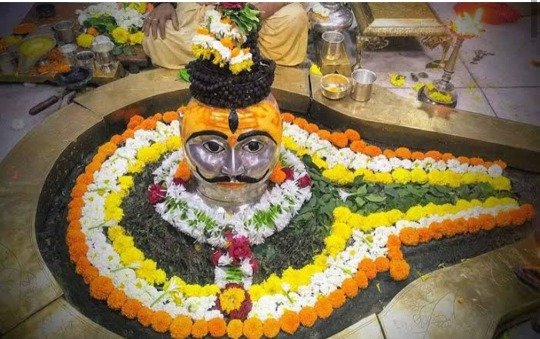

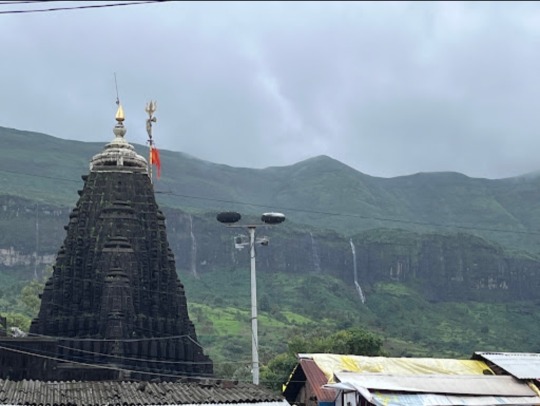
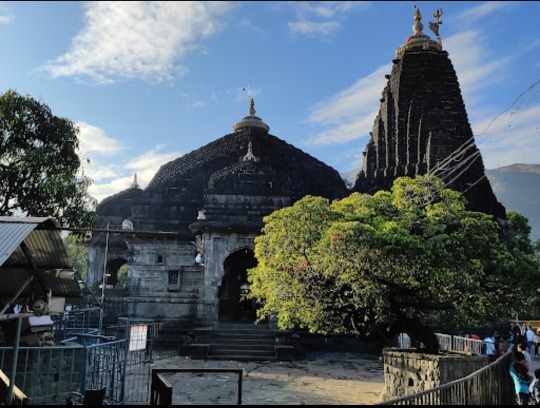
#hindu art#hindu astrology#hindu calendar#hindu mythology#hindu panchang#hindudharma#mahabharata#paubha#ramayana#vedic astrology
6 notes
·
View notes
Photo
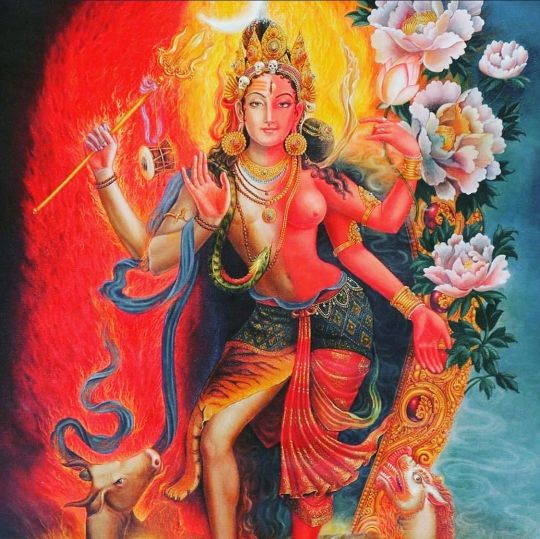
Ardhanarishvara ————————————————— “In Buddhism it doesn’t matter who you are- man, woman, straight, gay, lesbian, transsexual. It's not about those issues; its about how you work with your mind. If you have a mind, then whether it's straight or gay or lesbian or whatever doesn’t matter- mind’s nature is mind's nature. If the nature of mind is enlightened, then there you go." ———————————————————————— By Dzogchen Ponlop Rinpoche ————————————————— #luckythanka #paubha #vajrayana #vajra #yana #thangka #art #painting #vajrayanabuddhism #tibetanbuddhism #tibetanart #newariart #newari #vajradhara #bodhisattva #buddha #tantra #tantrayana #tantricsexuality #tantric #tantricbuddhism #shiva #shakti #gay #pride #dzogchen #shakta #gayrights #humanrights #om (at Lucky Thanka Art & Craft) https://www.instagram.com/p/B7NCmeahr6M/?igshid=1gwxij072ev6t
#luckythanka#paubha#vajrayana#vajra#yana#thangka#art#painting#vajrayanabuddhism#tibetanbuddhism#tibetanart#newariart#newari#vajradhara#bodhisattva#buddha#tantra#tantrayana#tantricsexuality#tantric#tantricbuddhism#shiva#shakti#gay#pride#dzogchen#shakta#gayrights#humanrights#om
0 notes
Photo


Lok Chitrakar Paubha
The form of Avalokiteshvara favored by the Tibetans has a thousand arms, a thousand eyes (in his open palms), and eleven heads. He is said to have acquired these many arms and heads as a result of his frustration with the Tibetans. The story begins when Avalokiteshvara was dwelling in Sukhavati, the Pure Land of Amitabha Buddha, where everything was wonderfully peaceful. Feeling quite confident and expansive, Avalokiteshvara decided to go down to Tibet to help it become a civilized, nonviolent nation. He vowed to Amitabha: “If I should ever get discouraged down there, working with those barbaric Tibetans, may my body be shattered into a thousand pieces.” Then he descended, and for several lifetimes he meditated in the mountains upon boundless compassion, continually emanating waves of love.In those days the Tibetans were powerful warriors who had conquered much of Central Asia. They also loved to have a good time and eat great quantities of yak meat. In the traditional language of Buddhism, they were difficult to tame. After many lifetimes, Avalokiteshvara began to be aware that such deeply ingrained tendencies are not easily pacified. Just emanating waves of love does not do the trick—violence somehow persists. Offer food to a hungry demon, and he responds by starting to eat your arm. In a moment when Avalokiteshvara was not guarding his mind, he thought: “These evil, violent Tibetans are insatiable. No matter how peaceful and loving I am, it has no effect.” He became a bit discouraged and wept, they say, two tears. From each tear a goddess was born, one white and one green—the two forms of Tara. The two goddesses said, “Stop weeping, we’ll help you. Please calm yourself.” And their words indeed calmed him down for a lifetime or two. At last, however, he became truly discouraged, and in that moment his body was instantly shattered into bits.Then one of the fragments of the bodhisattva cried out in despair to Amitabha Buddha for help. Amitabha came down to the place where Avalokiteshvara’s pieces were strewn about the mountain. In typical guru fashion, he looked down at the broken bodhisattva and said, “What’s your problem? Who ever told you to take such an ambitious vow? What have you done to yourself? You know, you should always be careful about what you wish for, because—whatever it is, good or bad—sooner or later you will get it.” Then Amitabha blessed the bodhisattva, and the thousand pieces became an imposing figure with a thousand arms, a thousand eyes, and eleven heads.Thousand armed Avalokitesvara bodhisattva
141 notes
·
View notes
Photo

Eight Armed Ganesha
Newari Paubha, Handmade Cotton Canvas.
(via www.handmadeexpo.com)
73 notes
·
View notes
Photo

Double-Sided Painted Banner (Paubha) with God Shiva and Goddess Durga, 1501, Art Institute of Chicago: Asian Art
In this dynamic, double-sided painted banner from Nepal, designed to be carried high over the heads of the crowd during a religious festival, the Hindu God Shiva dances on his bull, Nandi, who turns his head upward to look lovingly at his Lord. This may represent Shiva as Nataraja, Lord of Dance, who is often depicted dancing atop his bull in Nepal. The other side depicts Durga, Shiva’s shakti (energy), dancing on a white snow lion. The remarkably well-preserved painting is enlivened by the bold colors and vibrant textile patterns, the sashes flying out in all directions, and the swag at the top framed by flaring tassels. Large, striking flowers are scattered against the background. In his upper arms Shiva holds his traditional attributes the trident and the rosary (rudrakshamala). He holds a Buddhist stupa (burial mound) in one lower hand—an unusual attribute—while his other forms the vitarka mudra (teaching gesture). That a Hindu deity should hold a Buddhist stupa illustrates the non-sectarian, all-encompassing nature of religious devotion in Nepal. Kate S. Buckingham Fund
Size: 95 x 71 cm (37 3/8 x 28 in.)
Medium: Pigment and gold on cotton
https://www.artic.edu/artworks/142517/
17 notes
·
View notes
